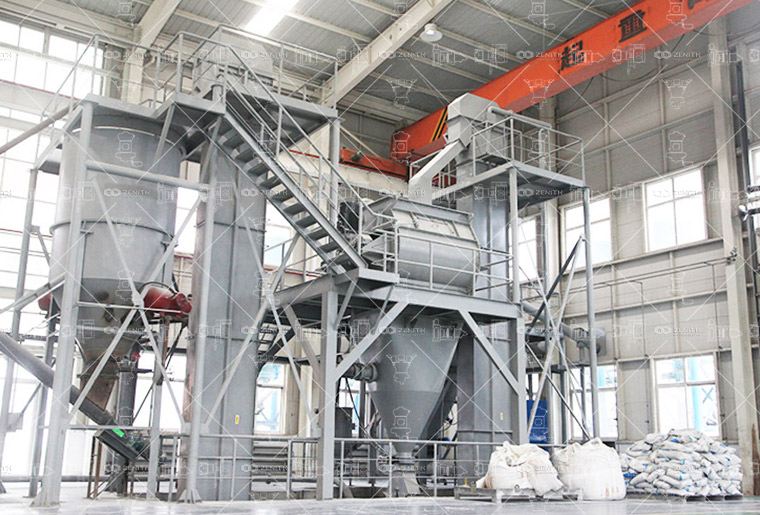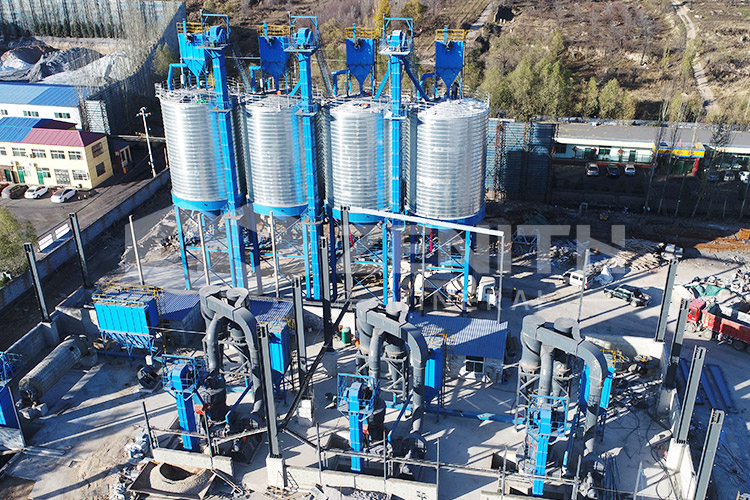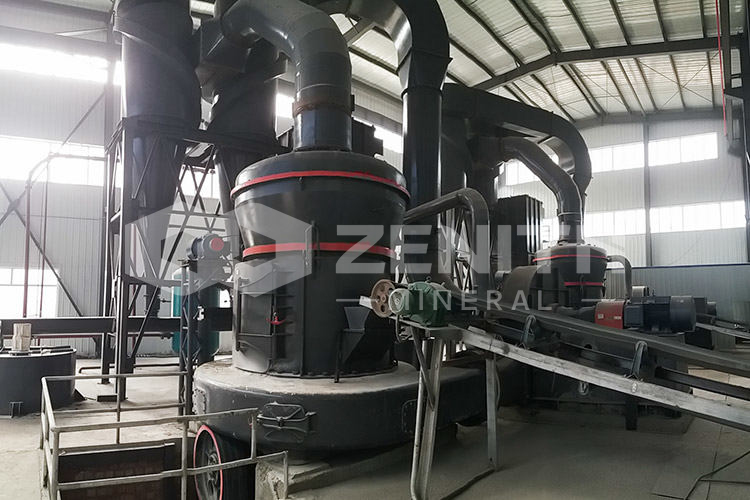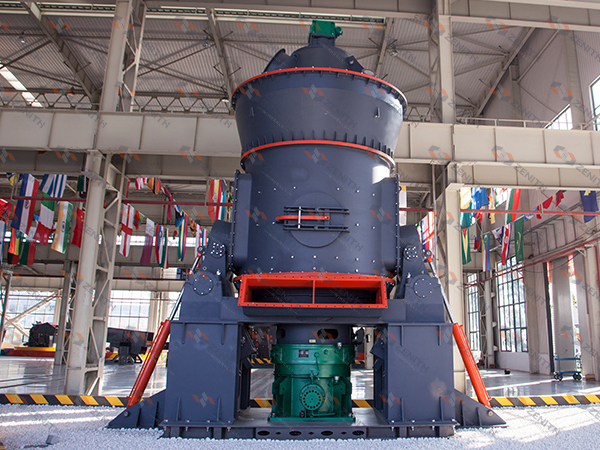The role of grinding in the production of humic acid fertilizer from lignite
2025-11-11 16:57:25
In the evolving landscape of sustainable agriculture, humic acid fertilizers derived from lignite have emerged as a cornerstone for enhancing soil health and crop productivity. The transformation of raw, weathered lignite into a potent agricultural amendment is a sophisticated process where grinding technology plays a pivotal role. The efficiency, fineness, and quality of the final powdered product are directly dictated by the grinding equipment used, making the selection of the right mill a critical decision for producers.
Lignite, a low-rank coal rich in organic matter, is the primary source for commercial humic acid extraction. However, in its natural state, its complex macromolecular structure is not readily available for plant uptake. The initial step in unlocking its bio-stimulant potential is size reduction. Coarse crushing breaks down large chunks, but it is the subsequent fine and ultra-fine grinding that truly liberates the humic substances by dramatically increasing the surface area of the particles. This enhanced surface area is crucial for the subsequent chemical or biological activation processes, as it allows for more efficient extraction and reaction. Furthermore, a uniformly fine powder ensures consistent quality, easy handling, and superior solubility when applied to the soil.

The journey from raw lignite to a market-ready fertilizer involves multiple grinding stages, each requiring specific machinery. For the initial breakdown of mined lignite, a Hammer Mill is often the equipment of choice. Our HM series, for instance, is engineered to produce a consistent 0-3mm coarse powder. Its robust design and high grinding ratio make it ideal for this tough, abrasive material, setting the stage for further refinement. Attempting fine grinding directly from large lumps is highly inefficient and puts unnecessary strain on equipment.
Following coarse grinding, the material proceeds to the core fine grinding stage. Here, the objective is to achieve a powder fineness typically between 80 and 400 mesh, which is considered optimal for most humic acid fertilizer formulations. For this purpose, trapezium mills like our MTW European Trapezium Mill and MTM European Trapezium Mill are exceptionally well-suited. These mills represent a significant leap in grinding technology, offering stability and efficiency that older technologies like ball mills cannot match. A key advantage for cost-conscious producers is their remarkably low energy consumption; they operate at more than 60% lower energy use compared to a ball mill of the same grade. This translates directly to a lower cost per ton of produced powder.
_1762851445330.jpg)
Beyond energy savings, the flexibility of these mills is a major benefit. Their modular impeller adjustment device allows operators to produce different fineness levels—for instance, switching between a 100-mesh product for bulk blending and a 325-mesh product for foliar sprays—simply by changing impellers, without requiring major downtime or reconfiguration. This adaptability is invaluable in a market with diverse customer requirements.
For large-scale production plants requiring maximum automation and constant running, the LM Vertical Grinding Mill presents a compelling solution. Its integrated design occupies about 50% less space than a traditional ball mill system, significantly reducing the footprint and civil engineering costs. The LM mill operates under negative pressure, a feature that is paramount in mineral processing. This sealed system ensures no dust spillage, creating a cleaner, safer work environment and preventing the loss of valuable product. The high degree of automation allows for easy monitoring and low labor costs, making it a cornerstone for modern, high-capacity fertilizer plants.
_1762851445332.jpg)
In the premium segment of the market, where ultra-fine powders (400 to 2500 mesh) are required for high-efficiency liquid fertilizers or specialized soil conditioners, advanced mills like the LUM Ultrafine Vertical Grinding Mill and XZM Ultrafine Grinding Mill come into play. The LUM mill, integrating German powder separation technology, excels in producing high-purity powders with minimal iron contamination, which is essential for maintaining the quality of the humic acid. Its energy-saving design reduces consumption by 30-50% compared to ordinary mills. The XZM series, capable of producing powder from 325 to 3000 mesh with a single classification, offers unparalleled control over fineness, allowing producers to create niche products with specific particle size distributions.
The working principle behind these advanced mills—whether it's the roller-and-ring system of the Raymond Mill, the roller-and-disc system of the vertical mills, or the impact-based system of the Hammer Mill—is designed for efficiency and control. Material is ground, classified by an internal or external powder selector, and collected in cyclones, with coarse particles continuously recirculated for re-grinding. This closed-loop system ensures maximum yield and consistent quality.
_1762851445333.jpg)
In conclusion, grinding is not merely a mechanical step but a transformative process in humic acid fertilizer production. The choice of grinding equipment directly impacts the activation level, application efficacy, and economic viability of the final product. From the robust coarse grinding of Hammer Mills to the efficient fine grinding of MTW/MTM Trapezium Mills, and further to the high-precision ultra-fine grinding of LUM and XZM mills, Zenith's comprehensive portfolio offers tailored solutions for every stage. By leveraging this technology, producers can efficiently convert raw lignite into a powerful, sustainable tool for modern agriculture, enhancing soil vitality and supporting global food security.
Frequently Asked Questions
- What is the optimal fineness for lignite-based humic acid fertilizer?
The optimal range is generally between 80 and 400 mesh. A finer powder, such as 200-400 mesh, offers greater surface area for better solubility and plant availability, while a coarser powder around 80-100 mesh is suitable for bulk soil application and is more cost-effective to produce. - Why is energy consumption a critical factor in selecting a grinding mill?
Grinding is typically the most energy-intensive step in the production process. Mills with lower energy consumption, like the MTW and LM series, significantly reduce operational costs, improving the overall profitability and sustainability of the fertilizer production operation. - Can the same mill be used for both coarse and fine grinding of lignite?
It is not recommended. Using a dedicated Hammer Mill for coarse grinding (0-3mm) protects the more sensitive fine grinding mills from excessive wear and tear, ensuring their longevity and maintaining consistent fine powder quality. - How does a grinding mill ensure environmental protection during production?
Modern mills like the LM and LUM series operate under negative pressure with integrated pulse dust collectors. This sealed system prevents dust from escaping into the workshop, ensuring compliance with environmental standards and providing a clean working environment. - What is the advantage of a mill with adjustable output fineness?
Adjustable fineness, a feature of our MTW, MTM, and XZM mills, provides production flexibility. A single mill can be quickly reconfigured to produce different products for various market needs without investing in multiple dedicated production lines. - Is a vertical grinding mill suitable for a small-scale humic acid production plant?
While vertical mills are excellent for large-scale production, for smaller operations, the MTM Trapezium Mill or even a Raymond Mill may offer a more suitable balance of capacity, investment cost, and operational simplicity.








